Aug 17. After a ‘not too rolly’ night, we pulled anchor and headed south to Naigoro Pass. Only about 10nm away, we had a quick and easy trip. It was all inside the lagoon, protected from the ocean swell, but it did mean we had to keep a sharp lookout for baumies.
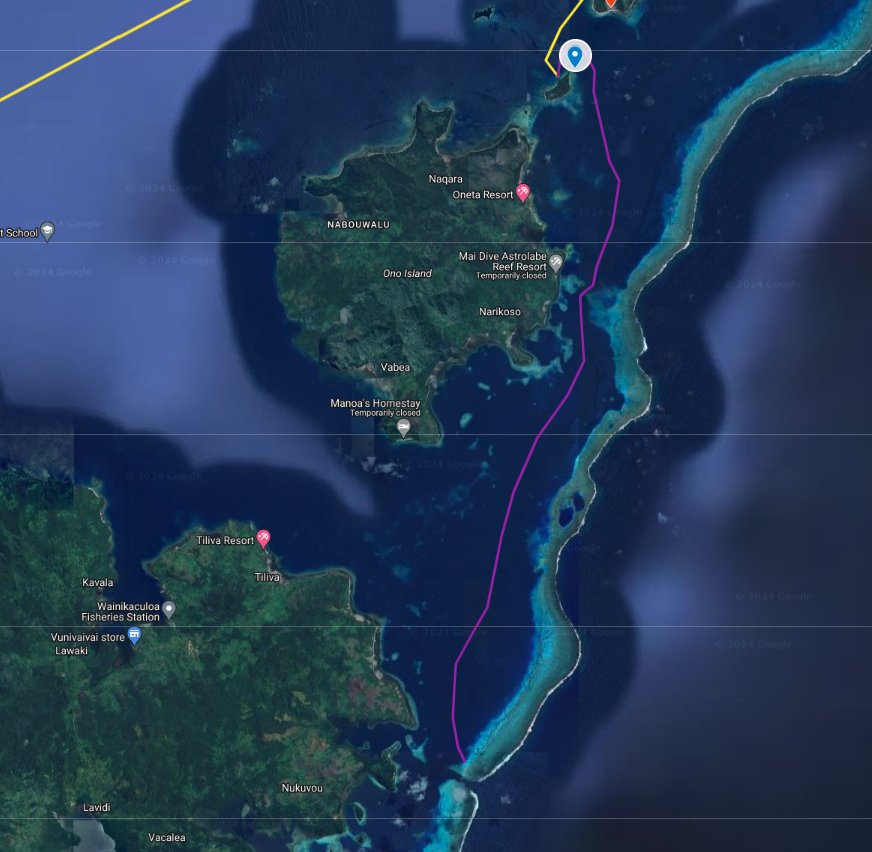
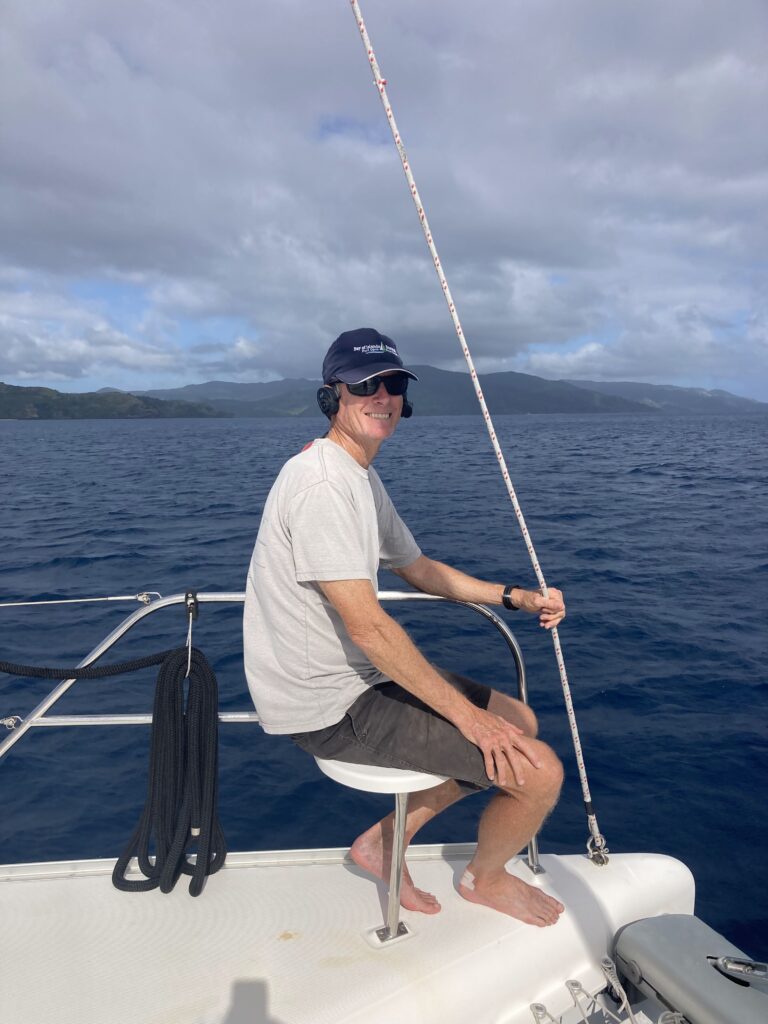
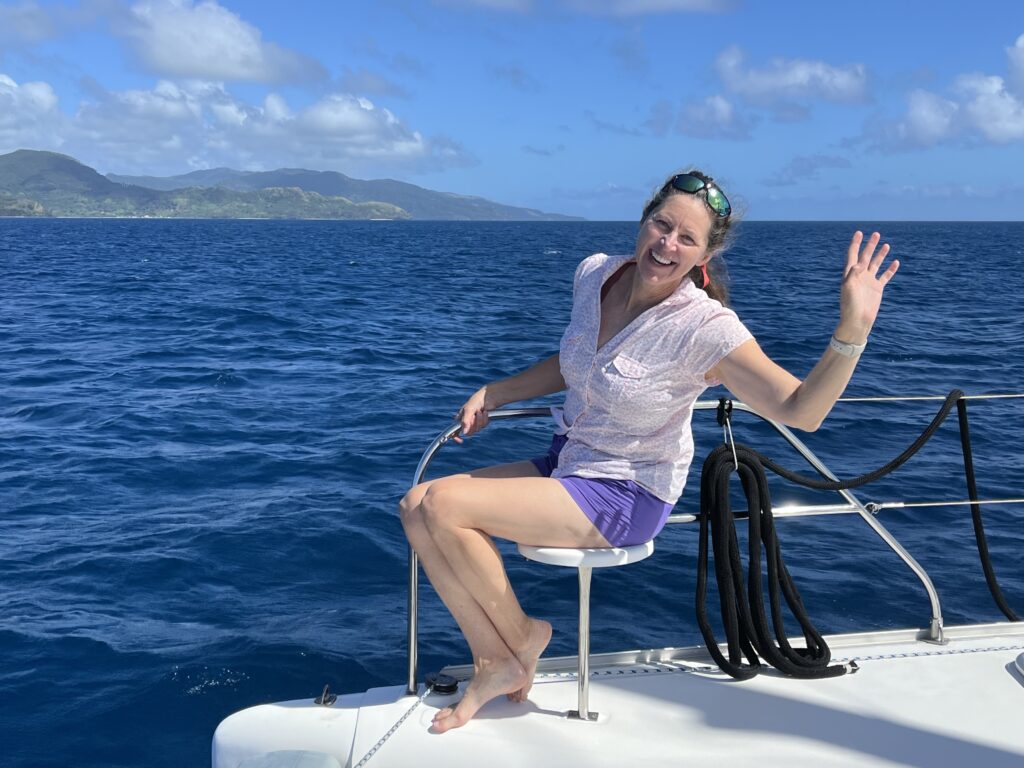
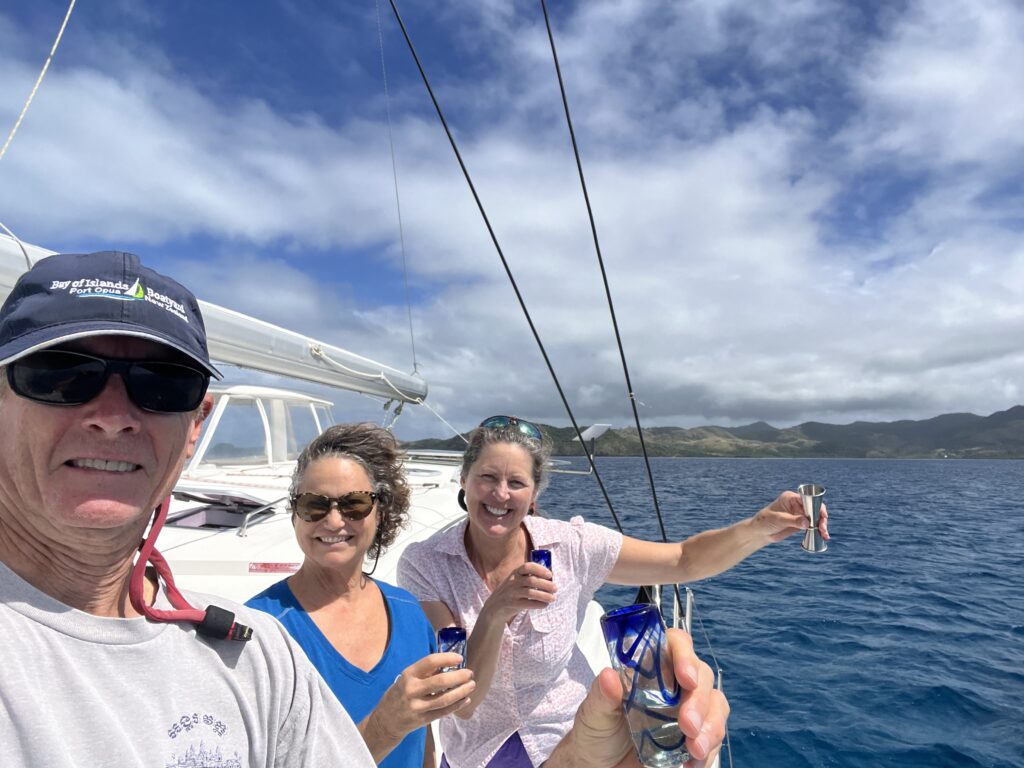
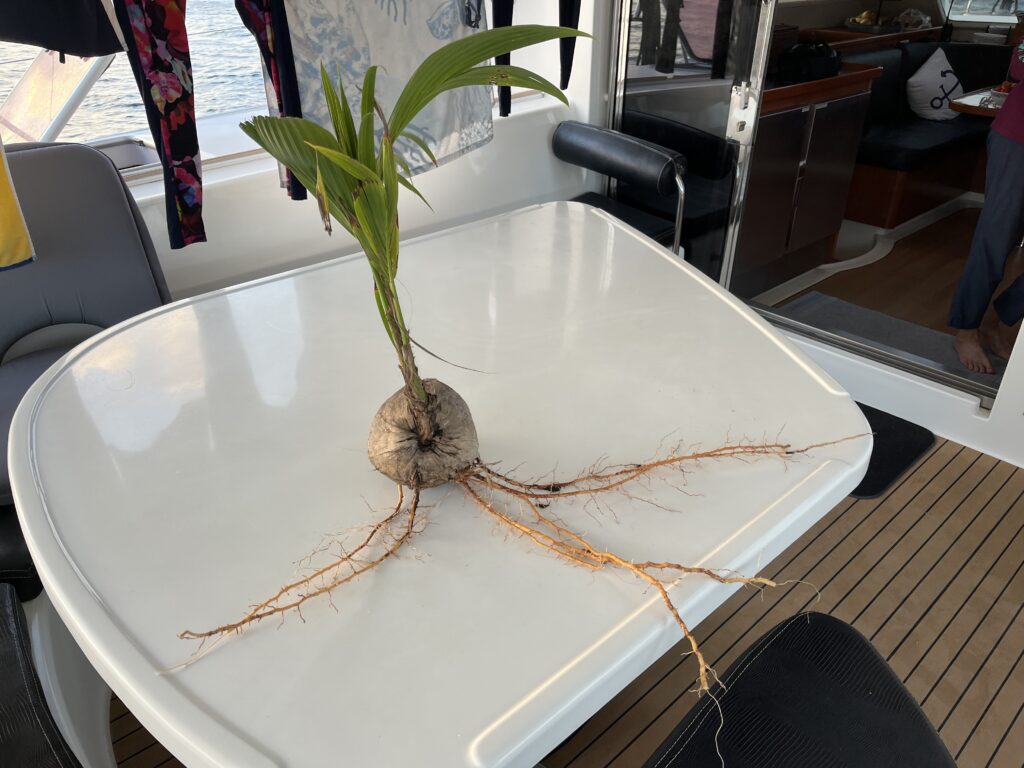
We found a floating coconut tree that had sprouted on land and been washed into the water. If you open a sprouted coconut, inside you will find a white spongy mass that sustains the tree initially. It tastes OK. Islanders mostly feed it to chickens and pigs.
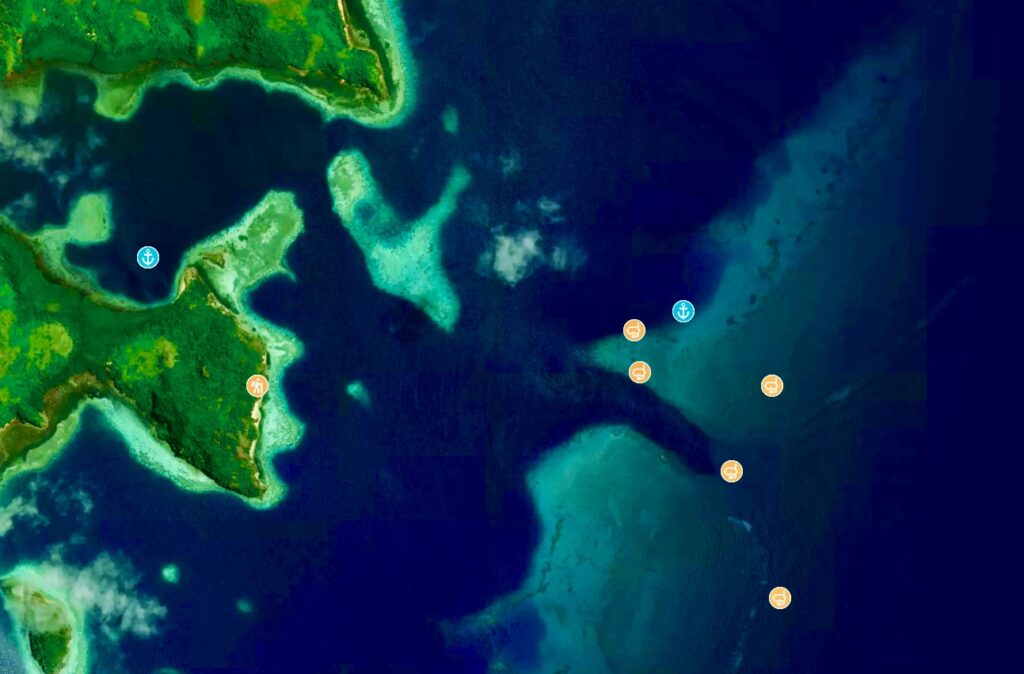
This screenshot, from the ‘No Foreign Lands’ website, is a good example of how useful this site can be. We anchored where you see the blue anchor symbol, right of center. The snorkel icons show dive / snorkel sites that other users have been to. Each has a description and often a review of the site. We added our reviews of many locations we visited using this website.
Naigoro Pass (right of center) has two snorkel icons describing the pass entrance, and further in, a location called ‘shark alley’. This was an amazing snorkel site. We did a ‘drift snorkel’ where we timed it so that the tide was coming in when we got out of the dinghy at the entrance. We drifted with the current, in through the pass, seeing amazing coral and fish go by as we were carried along. We switched off who was in charge of the dinghy, but this was easy, with it drifting along with us. Shark alley had a few reef sharks but not many.
In the morning we started heading towards Viti Levu, the largest of the Fijian islands. The first part was again inside the lagoon so we kept watch for baumies.
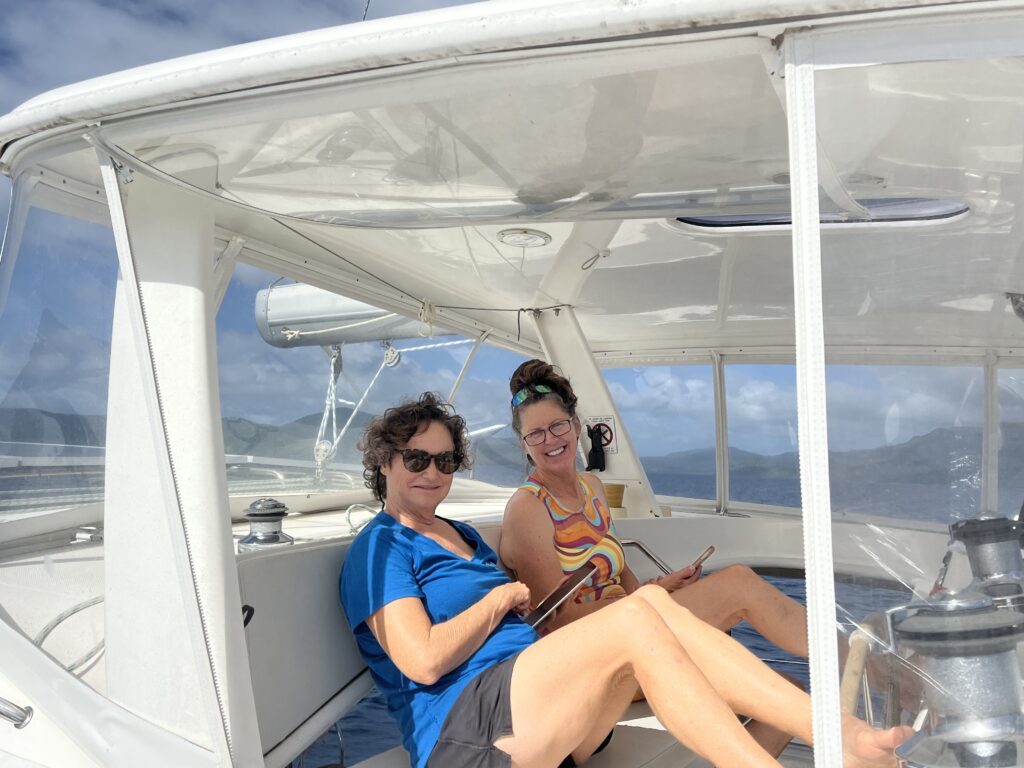
It wasn’t long before we were out in the open with 12 knot of wind behind us so up the spinnaker went!
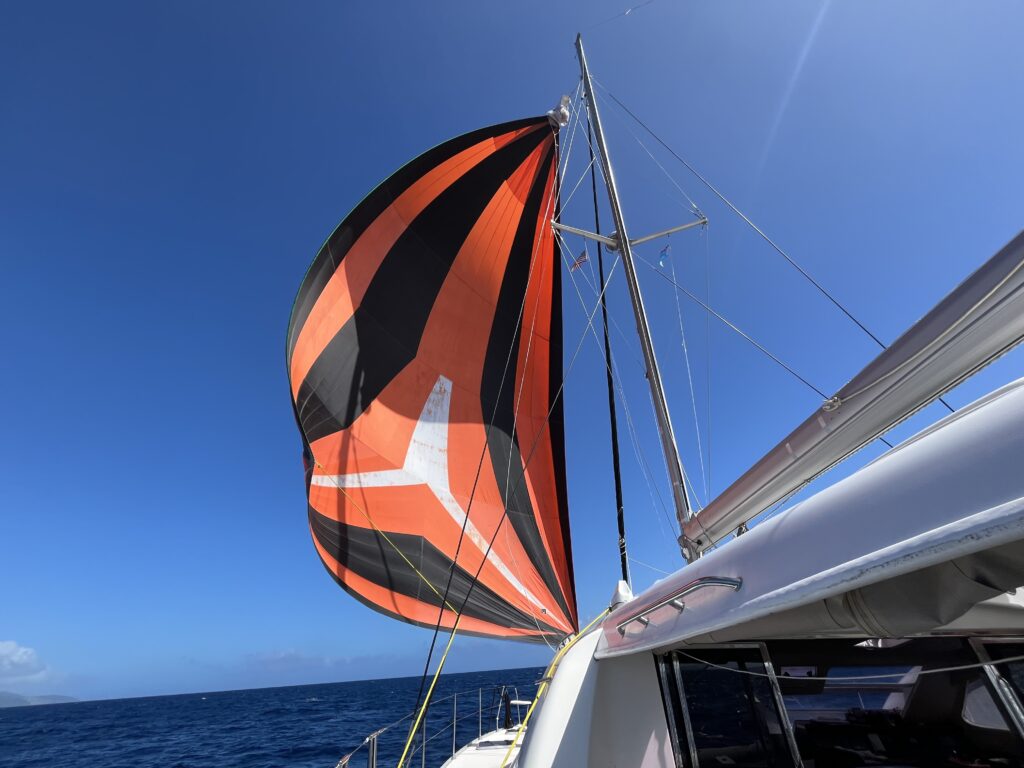
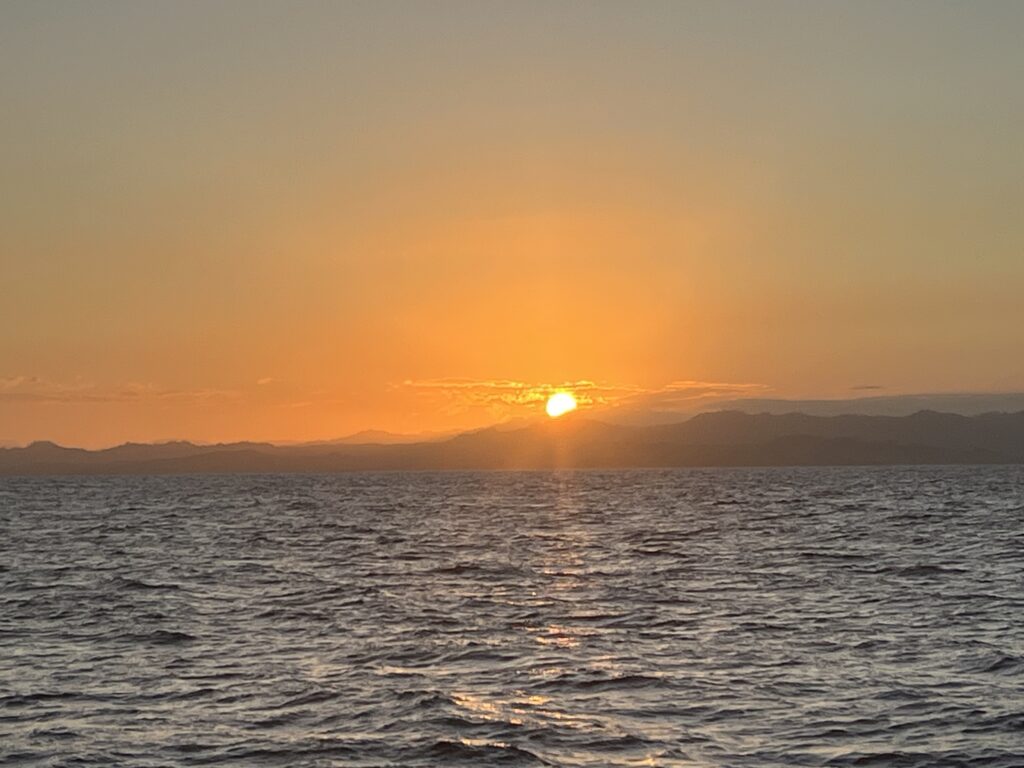
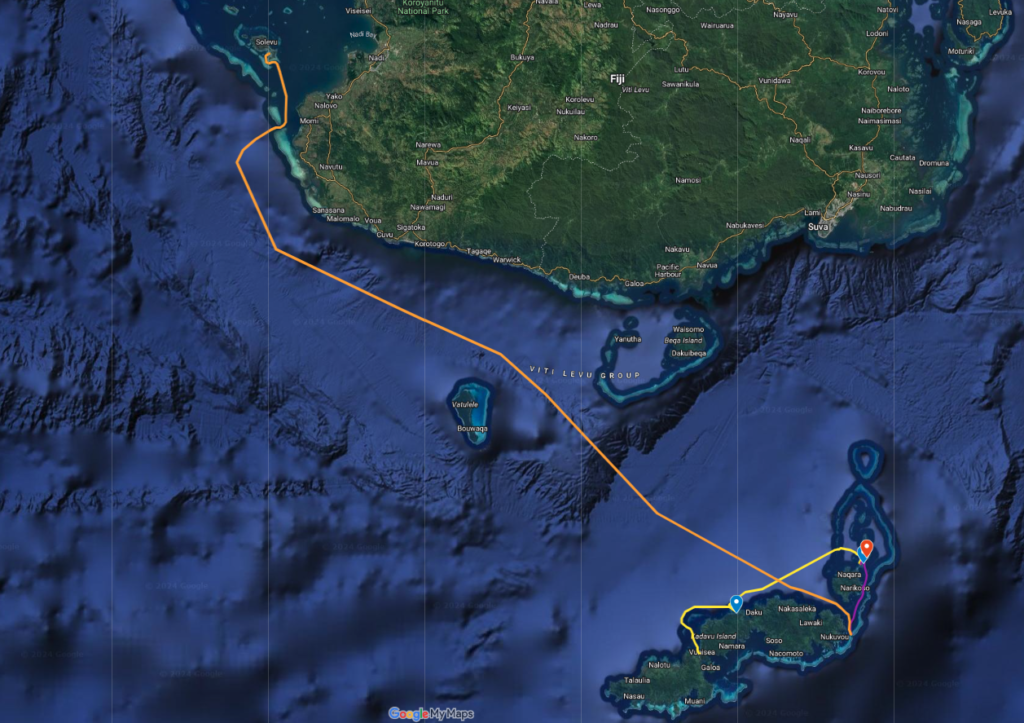
The trip was about 130 nm, the first over-night for Trina. Conditions were great and we entered the pass at Viti Levu about 8am the next morning. It is a wide and very well marked pass with lots of commercial traffic and a very easy entrance for us.
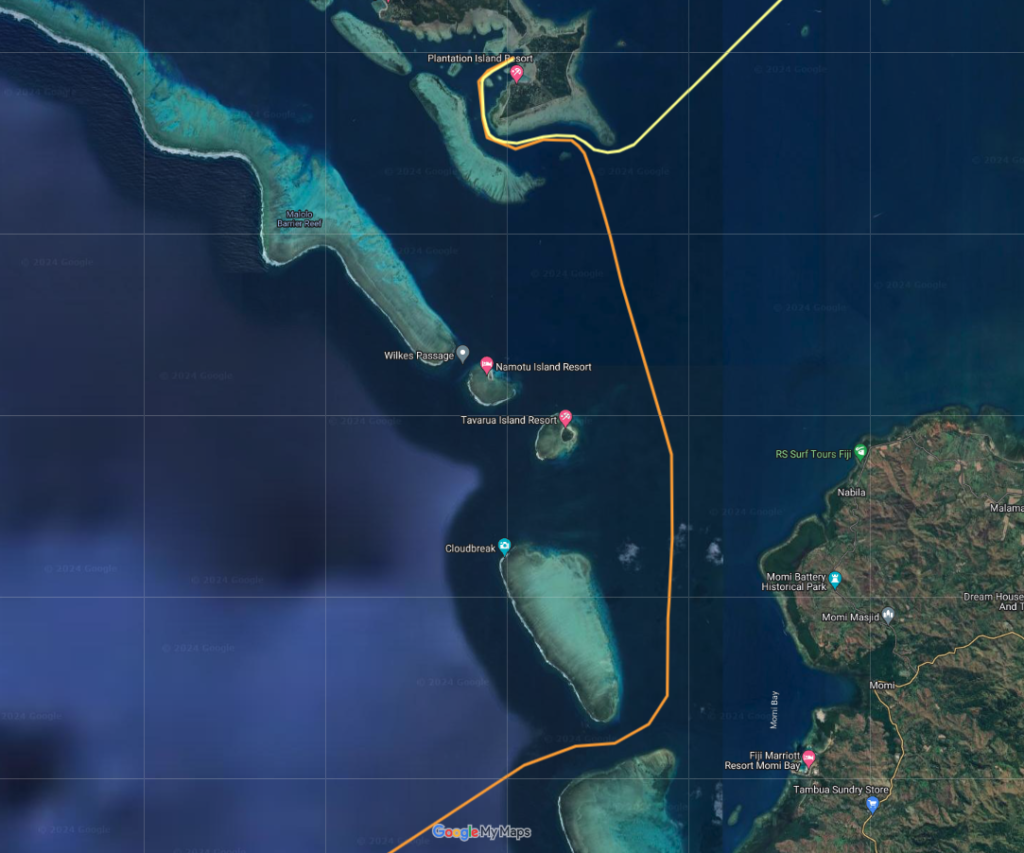
By 10:30 we were anchored in Musket Cove, a resort on a group of small islands a bit west of Viti Levu.
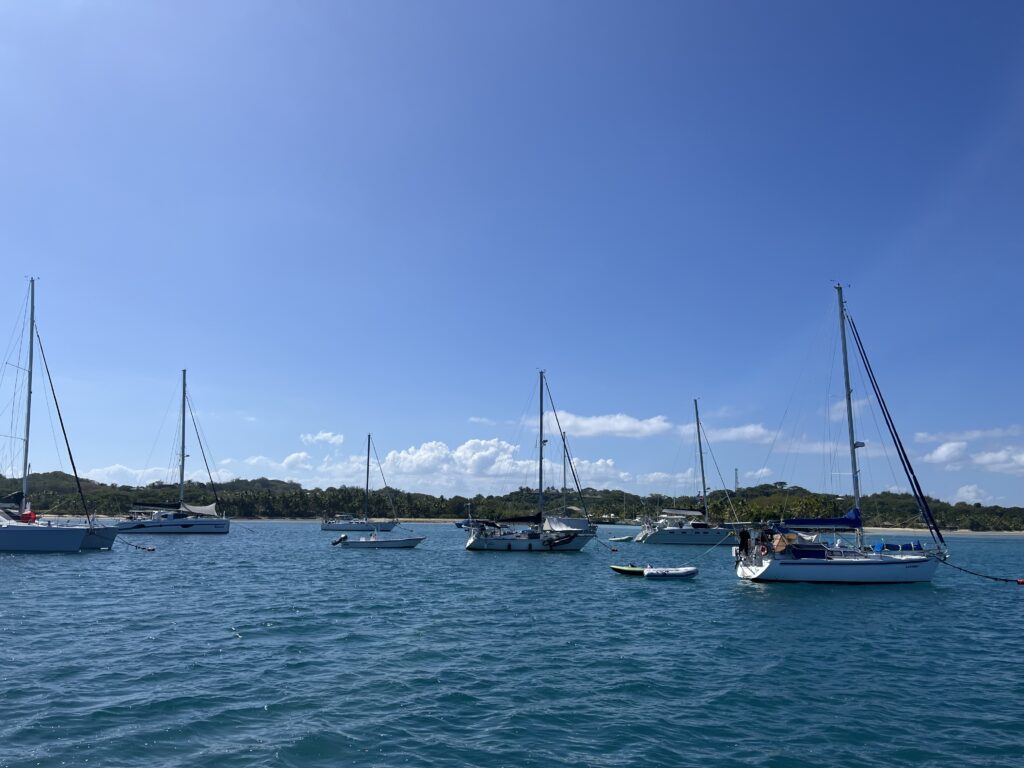
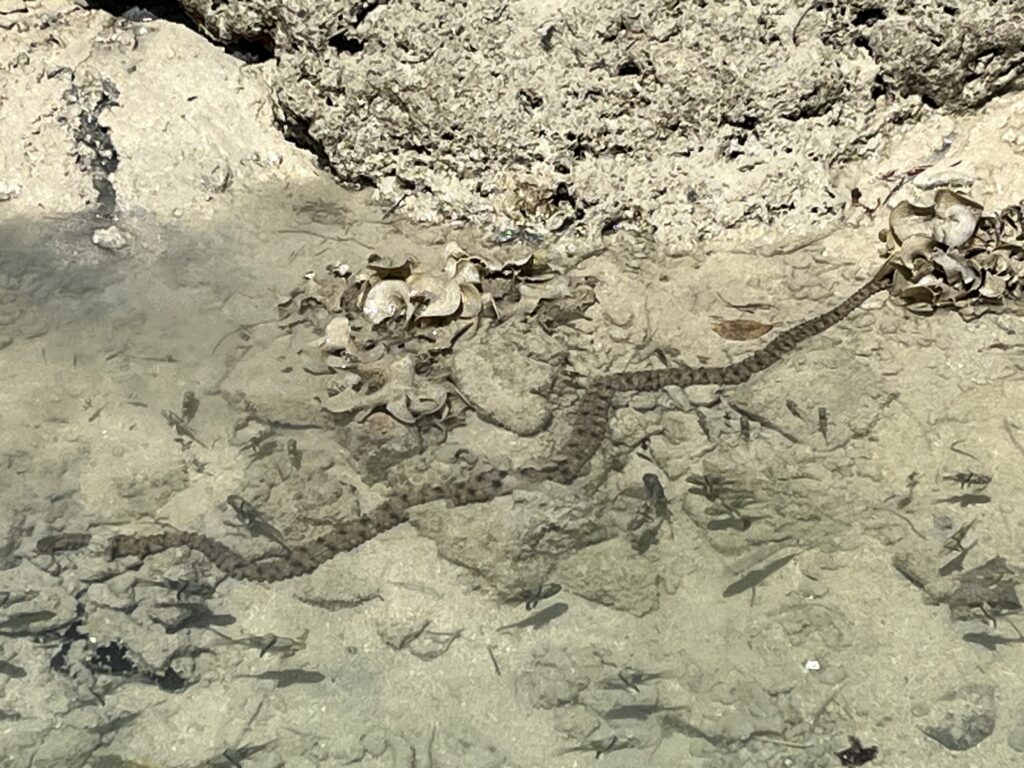
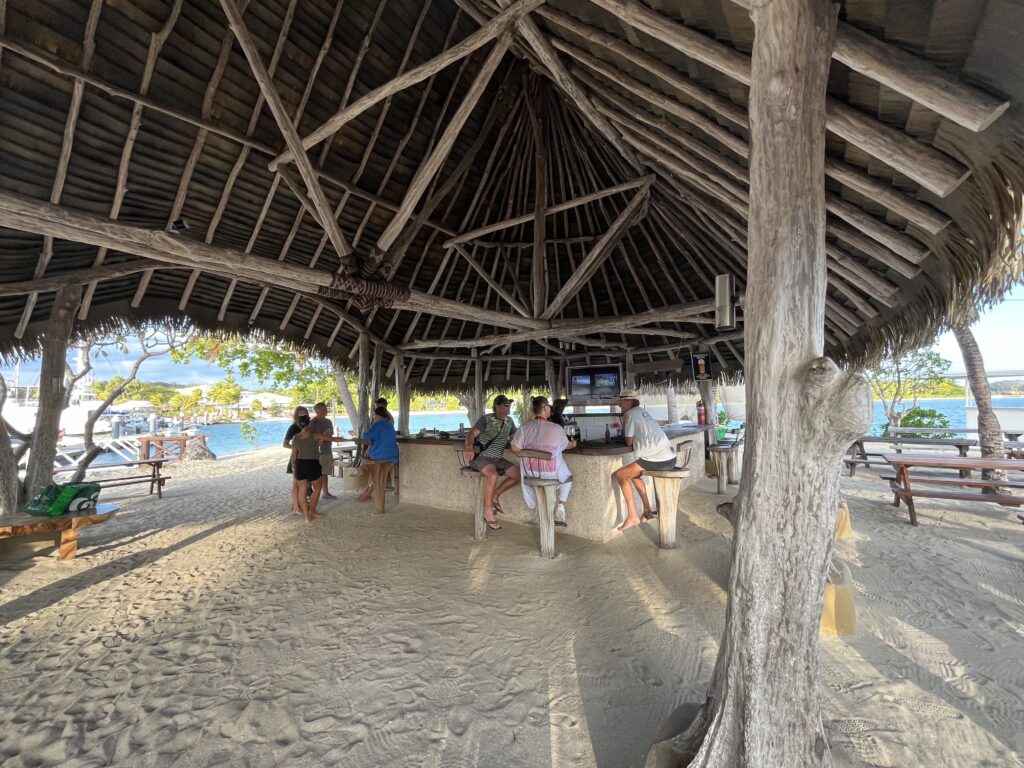
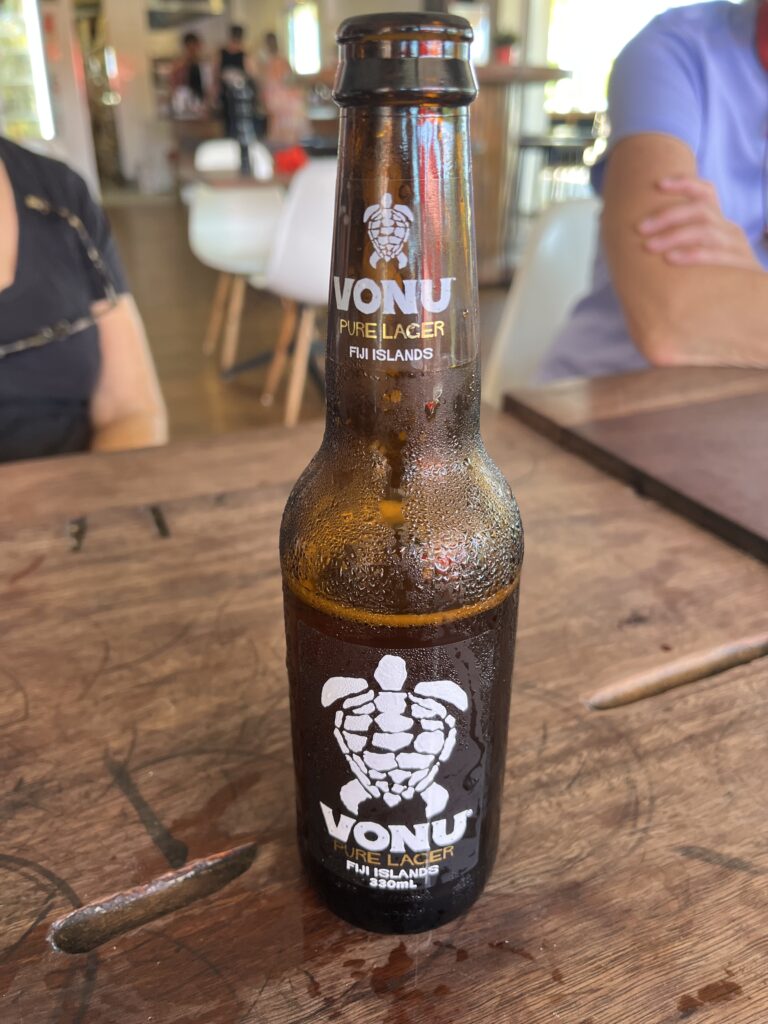
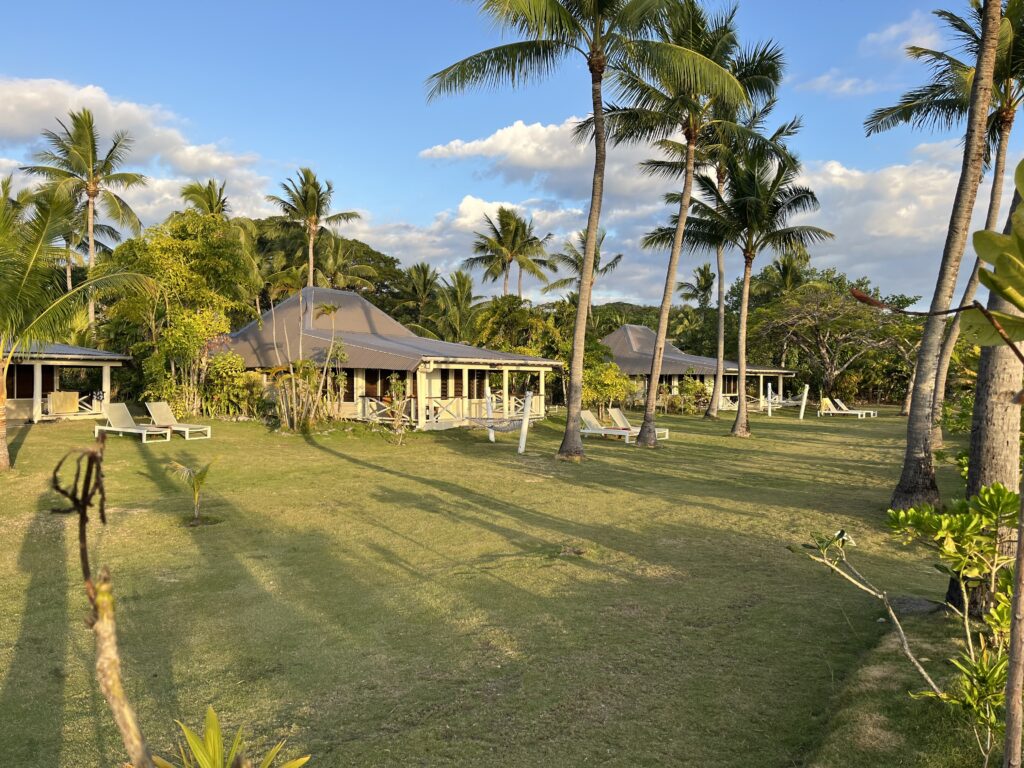
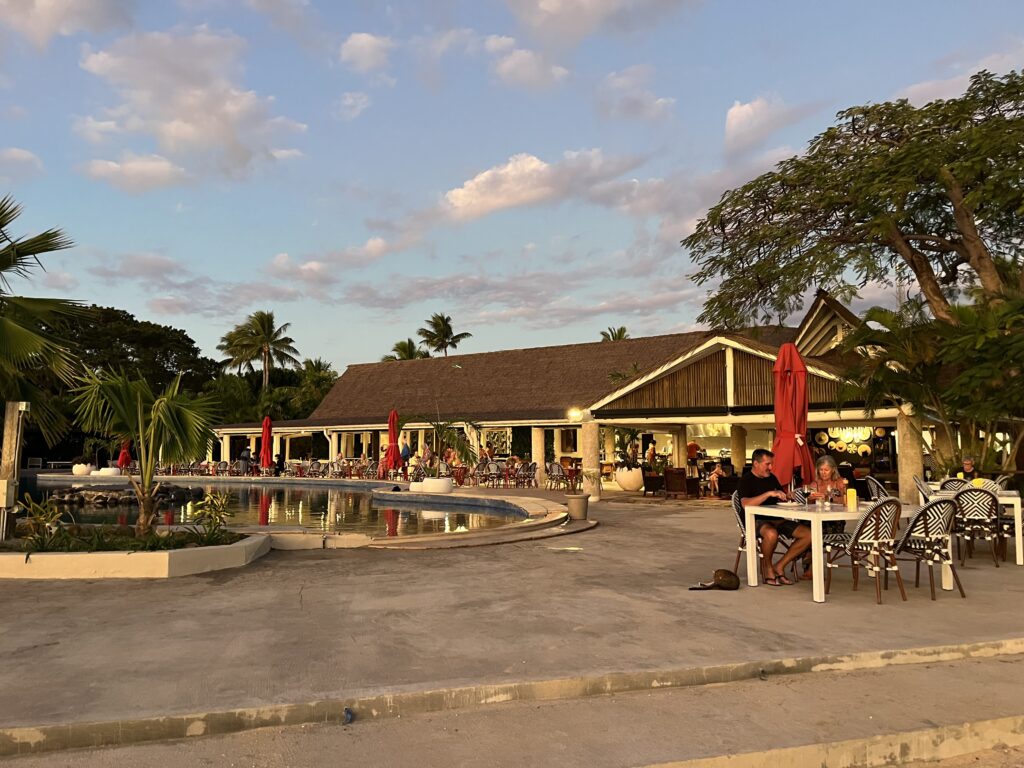
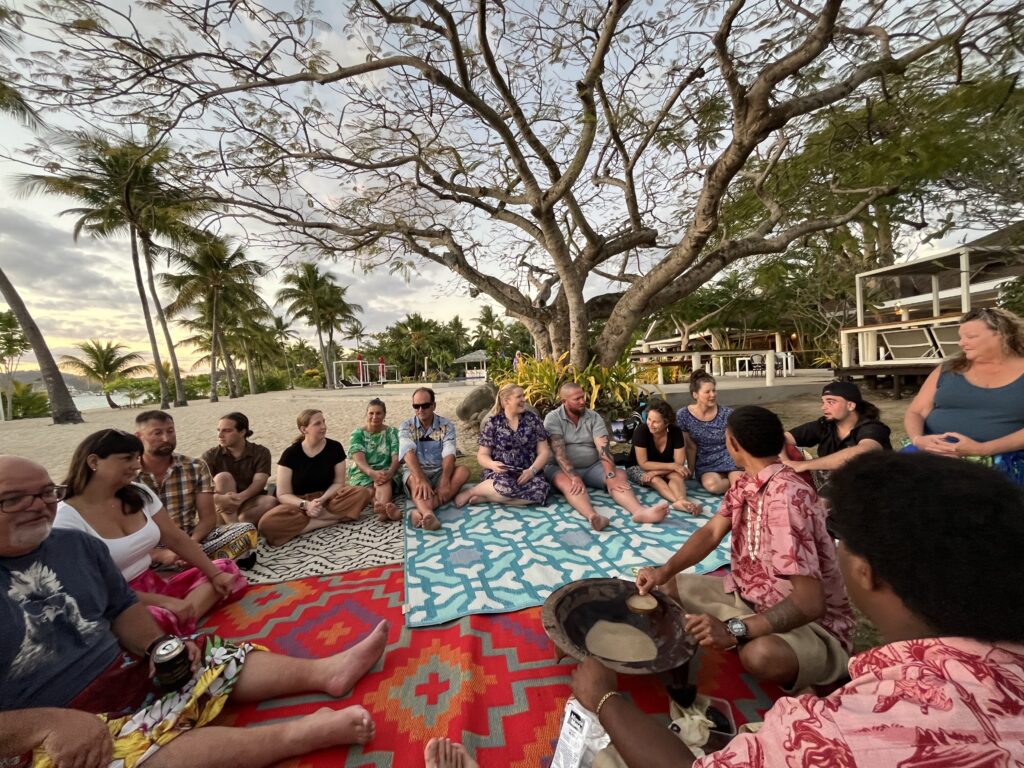
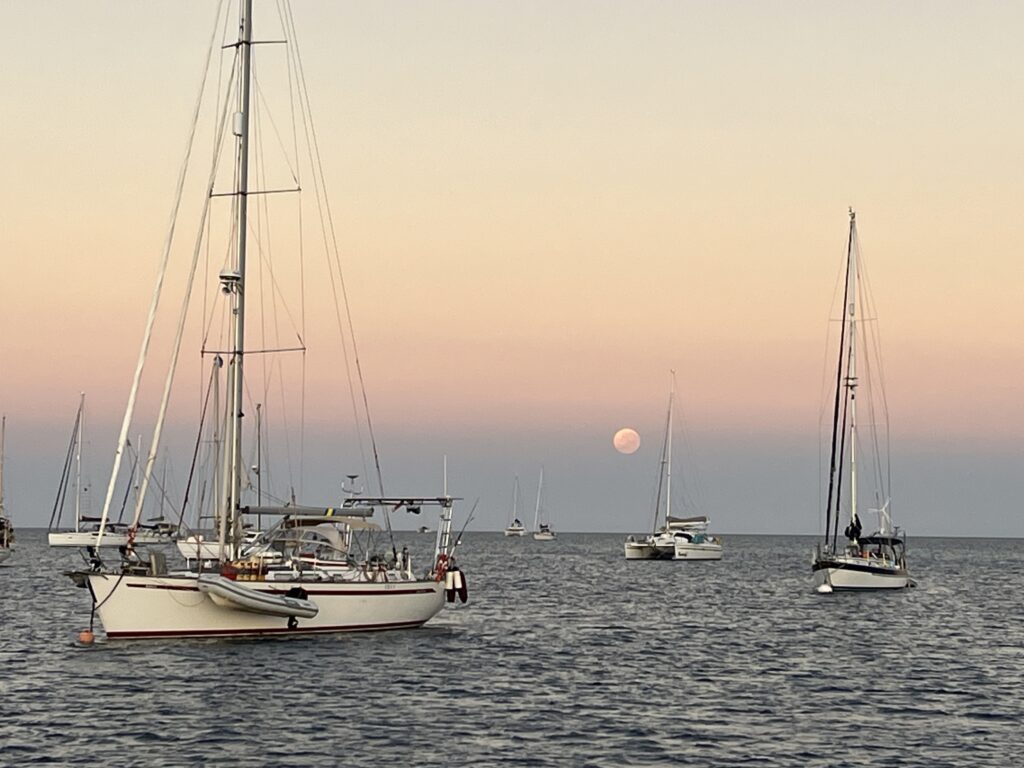

In the morning of August 20, we left for Vuda Point Marina, about 15 nm away.
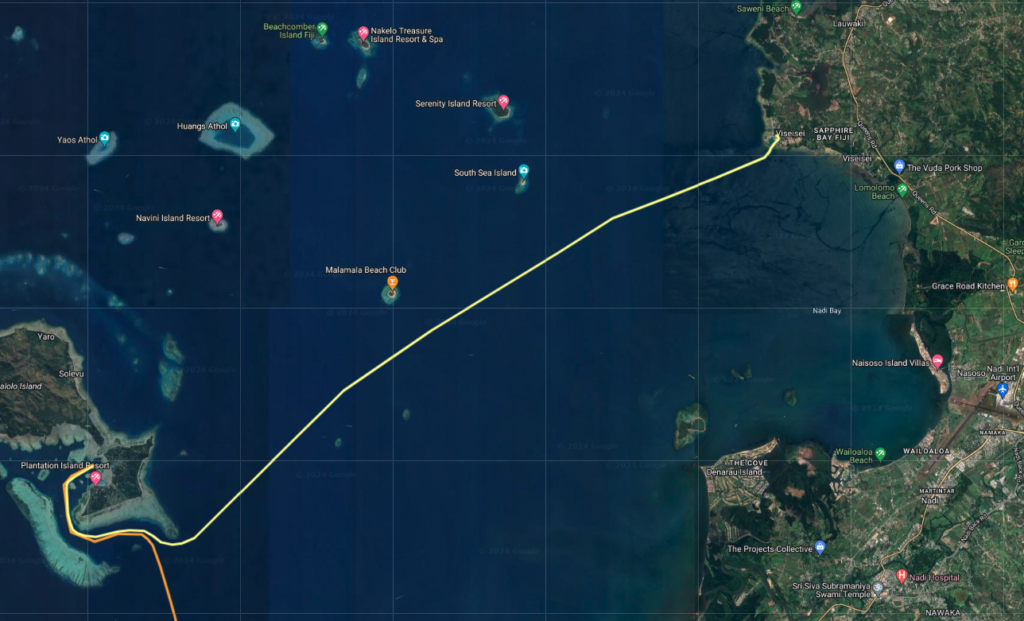
Vuda Point Marina is known as a ‘hurricane hole’ because of the very protected anchor basin. In the photo below, the circular area can be completely closed off from any incoming swell. It can still be battered by winds, but the boats can be strongly attached on stern and bow, so it is about as safe as you can be if you have to leave your boat in the water in Fiji for hurricane season. Even safer, you can put it on land. For monohulls, with deep keels, they dig a trench that the keel and the hull of the boat fits down into. A pretty good system.
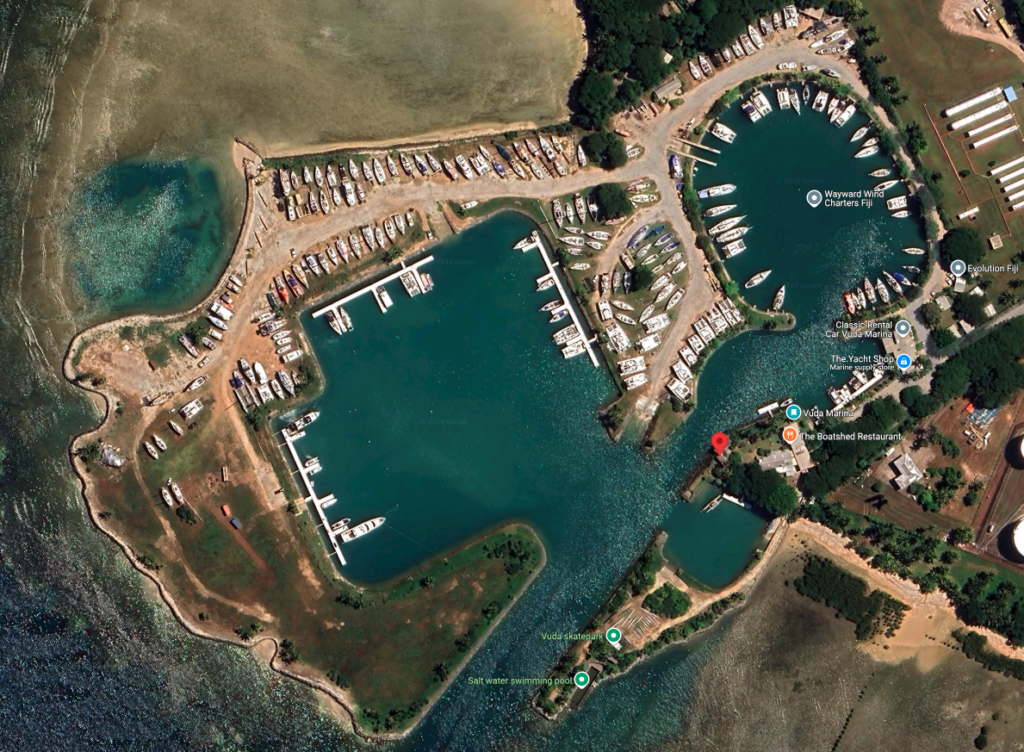
The marina also has several restaurants / cafes, a chandlery, skilled maintenance and repair people and a sail maker / repair shop across the street.
They even have several bungalows – but book early, they fill up fast!
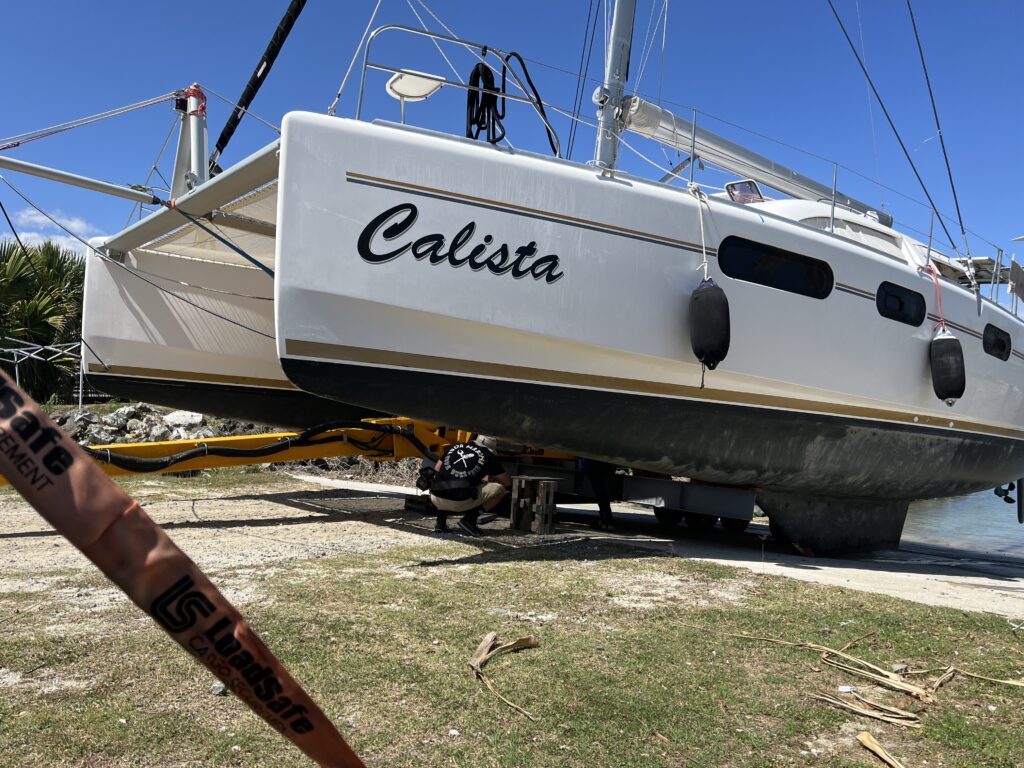
We had to pull Calista out to repair the damage on the port keel.
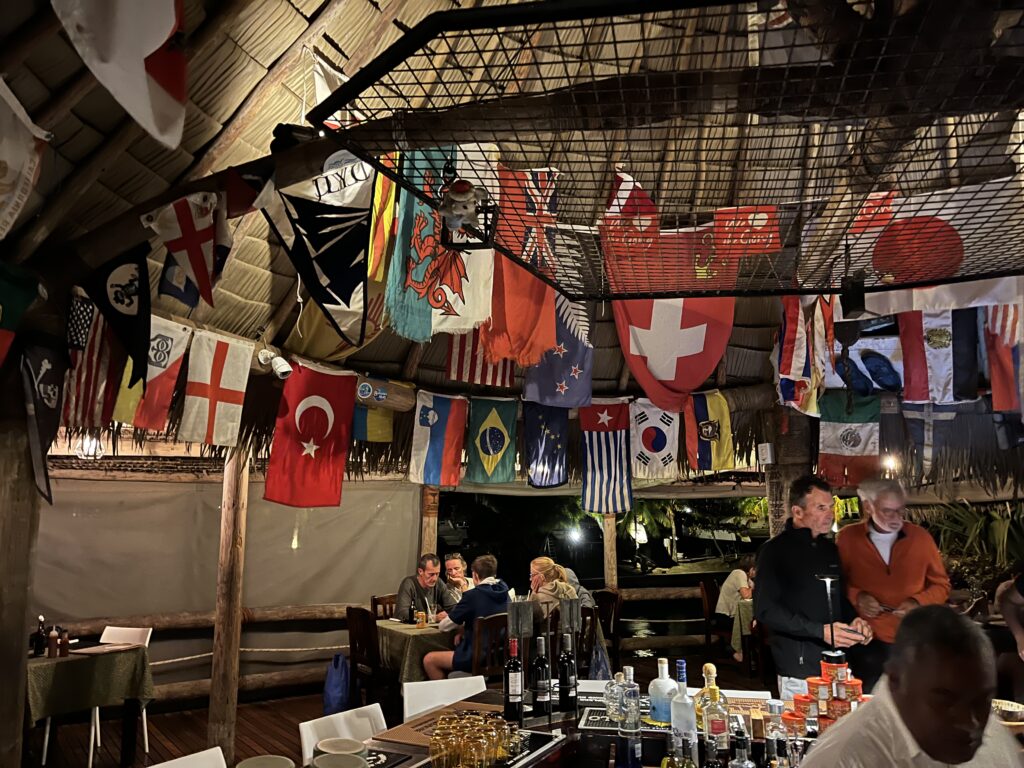
We did have time for some nice dinners and drinks with friends at the restaurants.
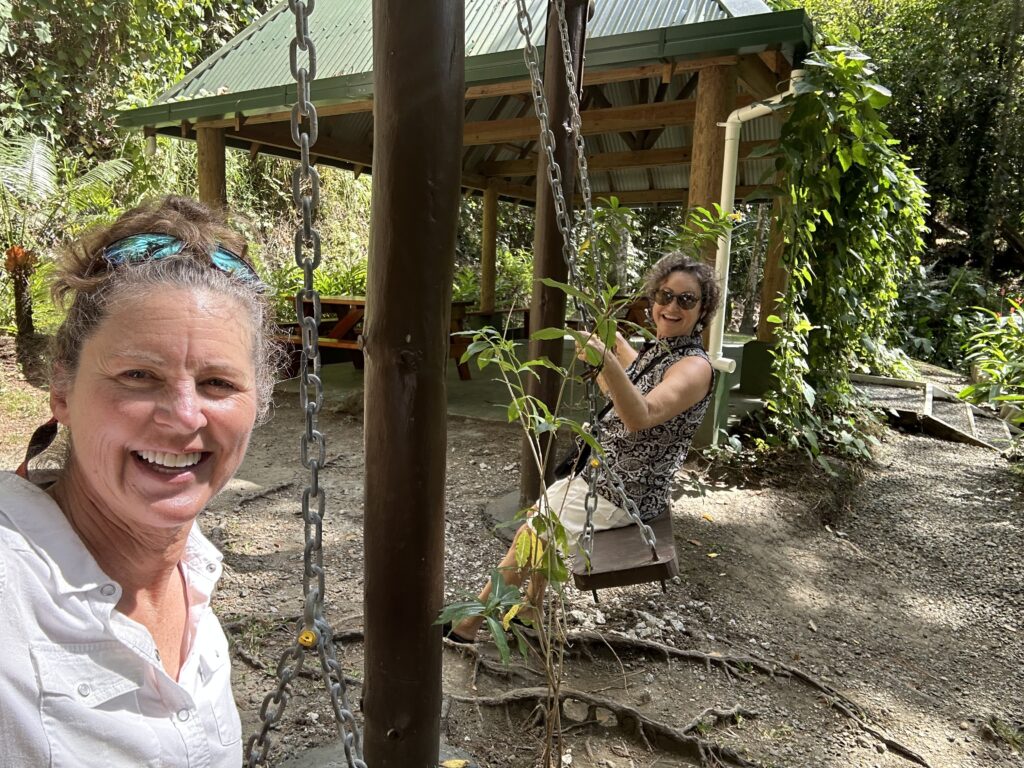
Peggy and Trina even got out to a botanical garden (I was doing boat jobs).
But all too soon, it was time to take Trina to the airport. We had a great time and are so happy she came to visit!